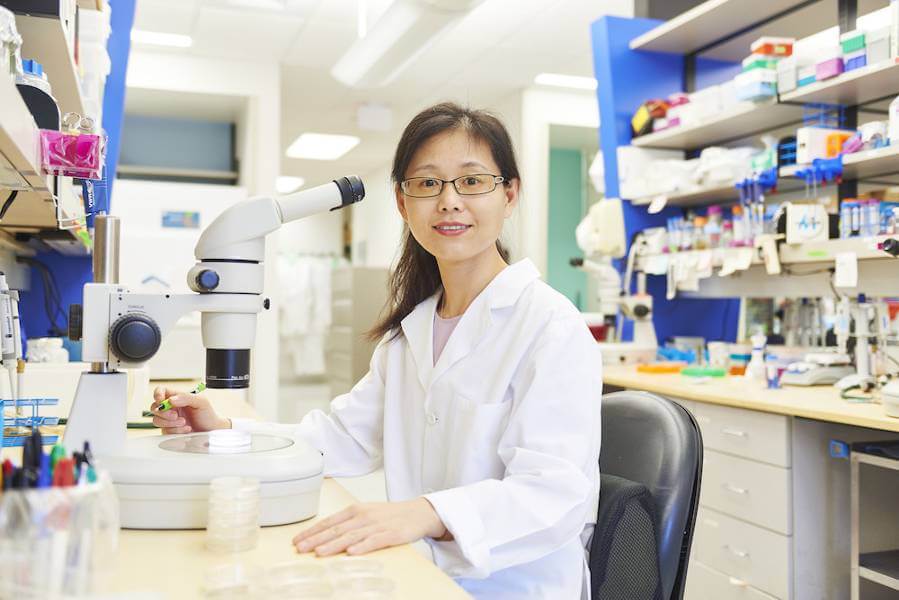Scientists have discovered that lysosomes in roundworms produce molecules that allow cells to ‘talk’ to one another about aging, coordinating the process across the entire organism.
For decades, biology students have learned that lysosomes – tiny sacs found within nearly all cells – had a singular task: to gobble up bits of foreign material and worn-out cell parts. The aim? To break them down for recycling.
But that lesson might soon need revising. Now, scientists are learning that molecules produced during the recycling process can also serve as signals that talk to other parts of the body.
These signals seem to play a role in determining how and when organisms grow old. Cells in different organs and tissues around the body send signals to one another constantly, says Meng Wang, an HHMI Investigator at Baylor College of Medicine. “When we’re young, everything is connected and communicating. But as we age, some of these connections are lost and function declines.”
Wang has spent the past seven years exploring the link between longevity and the signals lysosomes produce. Her team previously discovered that such signaling occurs within cells. Now, they have found evidence that the anti-aging messages are transmitted between cells too, and among different tissues, Wang and her colleagues reported in a preprint on bioRxiv.org and later on June 9, 2022, in the journal Nature Cell Biology. The results suggest that lysosome signals help coordinate the body’s aging process – and prolong the lives of some organisms.
Extending life
Longevity, it seems, runs deep in Wang’s blood – her paternal and maternal grandmothers lived until ages 100 and 95, respectively. Neither was ill, and why they died remains a mystery, she says. “It makes me feel like there’s some secret to longevity and if we can study this, maybe we can use the knowledge and apply it to everyone.”
By 2050, scientists expect the number of people aged 65 years and up worldwide to double to 1.5 billion, according to a 2019 report from the United Nations. And growing older, scientists know, comes with an increased likelihood of disease and other health problems. That explains why research on lysosomes and longevity has taken off in recent years, says Xiaochen Wang, a biophysicist at the Chinese Academy of Sciences (CAS) in Beijing who specializes in lysosomes. Scientists have known for more than 50 years that proteins, lipids, and other molecules tend to accumulate in cells that are old, but, she says, “only now are people starting to pay more attention to these pieces of data.”
If our reporting has informed or inspired you, please consider making a donation. Every contribution, no matter the size, empowers us to continue delivering accurate, engaging, and trustworthy science and medical news. Independent journalism requires time, effort, and resources—your support ensures we can keep uncovering the stories that matter most to you.
Join us in making knowledge accessible and impactful. Thank you for standing with us!

